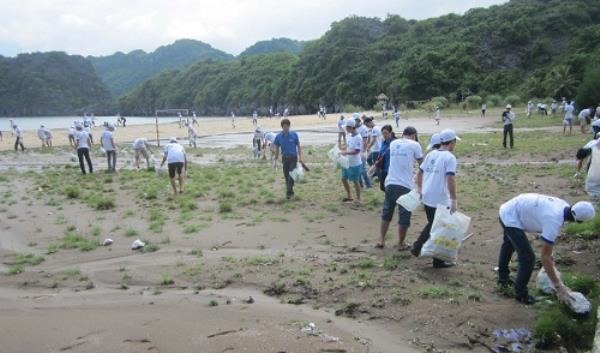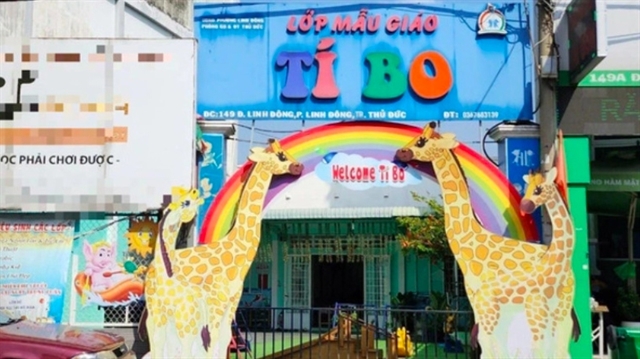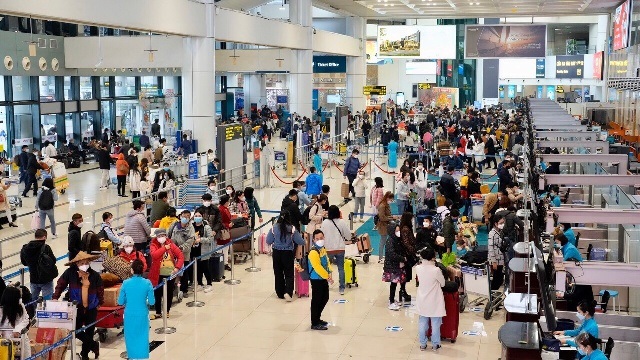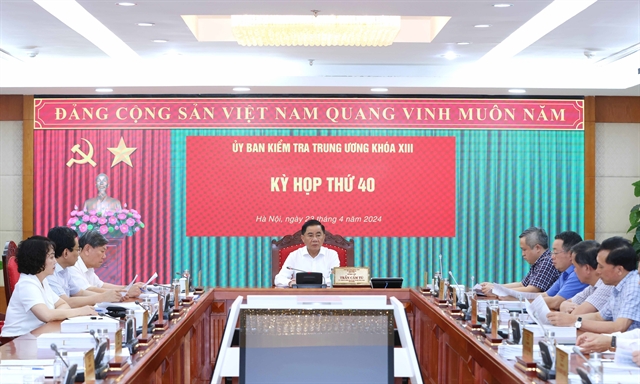

This means that clean up campaigns are needed.
Young people in Hải Phòng have offered their time to clean the beaches on Cát Bà Island.
" />Lots of garbage ends up on the beaches.
This means that clean up campaigns are needed.
Young people in Hải Phòng have offered their time to clean the beaches on Cát Bà Island.
 |
| Photo https://haiphong.gov.vn |
Lots of garbage ends up on the beaches.
This means that clean up campaigns are needed.
Young people in Hải Phòng have offered their time to clean the beaches on Cát Bà Island.
The volunteers also went around telling fishermen about the dangers that garbage can cause when it pollutes the sea.
HẢI PHÒNG — Up to 500 youth of Cát Hải Island District in the northern port city of Hải Phòng participated in a coastal cleanup campaign on Cát Bà Island on Thursday.
The cleanup campaign attracted youth, mainly secondary and high school students, officers from the armed forces and those working at local administrative units.
The campaign is part of the Red River Delta Adaptation and Youth (READY) programme, a joint project conducted by the Asian Management and Development Institute, the non-profit Centre for Marinelife Conservation and Community Development and the Centre for Environment and Community Research.
Addressing the event’s launch ceremony, Hoàng Trung Cường, vice chairman of Cát Hải District’s People’s Committee, said “The percentage of solid waste collected in the two towns of Cát Hải and Cát Bà has reached 90 per cent of total dumped waste and in other communes has been 75 to 80 per cent.”
“However, solid waste treatment remains unsuitable, causing not only pollution to the environment, but also affecting socio-economic development and public health,” he added.
He called on local agencies, organisations, individuals, enterprises and the whole community to take action to solve pressing environmental problems and move towards a sustainable and green Cát Bà Town, in response to international coastal cleanup campaigns this year.
Groups of environmental volunteers collected garbage on Tùng Thu and Cát Cò beaches, in Tùng Dinh Lake and at the central port while fishing out waste from Cát Bà Bay and Lan Hạ Bay.
The collected waste was then classified into different categories.
Vũ Thị Mỹ Liên, secretary of Cát Hải District’s Youth Union, told Việt Nam News that besides volunteering on Saturdays and Sundays, local youth had also set up a volunteer team to take out garbage twice a week from the island’s bays. They also visited villages to disseminate environmental protection information to fishermen, following which, fishermen who raise marine animals in the bays have become more aware on removal of fish cages and garbage collection.
The cleanup campaign on Cát Bà Island held Thursday is one of a series of activities conducted within the framework of the READY project from 2015 until 2018 and aims to enhance the pioneering role and innovations of the youth in climate change adaptation in the Red River Delta.
Ngô Công Chính, AMDI deputy head, said the READY project has selected youth as the core member to influence environmental protection and climate change adaptation actions because they are eager to learn, determined to take action and will be taking charge of important roles in the future.
“We must take into account the long time, 20-30 years, up to even 100 years -- when talking about climate change, so that the youth can feel its impacts. If no action is taken from today, it is the young generation that will be most vulnerable to its effects in the future,” he said.
Located to the south of well-known Hạ Long Bay of Quảng Ninh Province, Cát Bà Island is a popular tourist destination in the north, with approximately half of its area covered by a National Park, which was recognised by UNESCO as a Biosphere Reserve of the Cát Bà archipelago. — VNS
GLOSSARY
The campaign is part of the Red River Delta Adaptation and Youth (READY) programme, a joint project conducted by the Asian Management and Development Institute, the non-profit Centre for Marinelife Conservation and Community Development and the Centre for Environment and Community Research.
An organisation that is non-profit does its work to perform a service rather than to make money.
“However, solid waste treatment remains unsuitable, causing not only pollution to the environment, but also affecting socio-economic development and public health,” he added.
Socio-economic development means development that is to do with society and money.
He called on local agencies, organisations, individuals, enterprises and the whole community to take action to solve pressing environmental problems and move towards a sustainable and green Cát Bà Town, in response to international coastal cleanup campaigns this year.
A town that is sustainable is able to provide for its needs without making use of resources that will eventually disappear because of overuse.
Green, in this case, means environmentally friendly.
Vũ Thị Mỹ Liên, secretary of Cát Hải District’s Youth Union, told Việt Nam News that besides volunteering on Saturdays and Sundays, local youth had also set up a volunteer team to take out garbage twice a week from the island’s bays.
Volunteering means offering to do a job and not expecting payment for it.
They also visited villages to disseminate environmental protection information to fishermen, following which, fishermen who raise marine animals in the bays have become more aware on removal of fish cages and garbage collection.
To disseminate information means to spread it widely.
Marine means to do with the sea.
The cleanup campaign on Cát Bà Island held yesterday is one of a series of activities conducted within the framework of the READY project from 2015 until 2018 and aims to enhance the pioneering role and innovations of the youth in climate change adaptation in Red River Delta.
If you play a pioneering role in something, you are involved in starting it off.
Innovations are new ideas.
Ngô Công Chính, AMDI deputy head, said the READY project has selected youth as the core member to influence environmental protection and climate change adaptation actions because they are eager to learn, determined to take action and will be taking charge of important roles in the future.
Core members are those who are the most important people who are involved in the campaign.
“We must take into account the long time, 20-30 years, up to even 100 years -- when talking about climate change, so that the youth can feel its impacts.
Impacts are effects.
If no action is taken from today, it is the young generation that will be most vulnerable to its effects in the future,” he said.
People who are vulnerable are easily harmed.
Located to the south of well-known Hạ Long Bay of Quảng Ninh Province, Cát Bà Island is a popular tourist destination in the north, with approximately half of its area covered by a National Park, which was recognised by UNESCO as a Biosphere Reserve of the Cát Bà archipelago.
A destination is a place to which people travel.
UNESCO stands for the United Nations Educational, Scientific and Cultural Organization.
A biosphere is a place where there are living things.
An archipelago is a group of islands.
WORKSHEET
State whether the following sentences are true, or false:
ANSWERS: 1. False; 2. False; 3. True; 4. False; 5. True.


.jpg)





.jpg)
